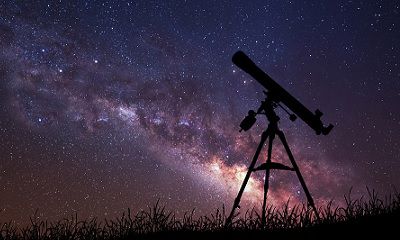
The world goes on. Or how life goes on without humans
Citaat Charles Darwin: “It is not the strongest of the species that survives, not the most intelligent that survives. It is the one that is most adaptable to change.”
https://www.nemokennislink.nl/publicaties/de-wereld-draait-door/
Stel: de mens verdwijnt van de ene op de andere dag. Hoe ontwikkelt het leven op aarde zich dan verder? Een speculatief kijkje in een wereld die doordraait zonder ons, en de lessen die we daaruit kunnen trekken. Aan de hand van twee evolutiebiologen neemt NEMO Kennislink je mee in dit gedachte-experiment. Conclusie: Voor zowel de appelboom als de stamboom van het leven op aarde geldt dus dat de snoei door de mens uiteindelijk doet bloeien. Maar waar onze appelboom dit jaar alweer veel nieuwe takken zal krijgen, is de tijdschaal voor het ontstaan van nieuwe takken (soorten) op de levensboom van een heel andere orde: pas na miljoenen jaren is de diversiteit terug op haar oude peil, dat wil zeggen, heeft de boom evenveel takken. En voor beide bomen geldt: een eenmaal verloren tak komt nooit meer terug. Voor het leven op aarde als geheel is dat geen probleem, want zo lang er leven is, gaat de evolutie door en veert de diversiteit terug. Wil de mens blijven meedoen in dit plaatje, dan is ons er echter alles aan gelegen om al wat vandaag leeft te behouden voor morgen. Wij hangen namelijk af van de ecosystemen zoals ze nu werken; een verlies en herstel van miljoenen jaren duurt voor ons te lang. Als de uitstervingsgolf te groot wordt, sleurt hij ons uiteindelijk mee.
Imagine: man disappears from one day to the next. How will life on Earth develop further? A speculative look into a world that goes on without us, and the lessons we can learn from it. NEMO Kennislink takes you along in this thought experiment with the help of two evolutionary biologists. Conclusion: So, for both the apple tree and the family tree of life on earth, it is the pruning by man that eventually makes it bloom. But where our apple tree will get many new branches this year, the time scale for the emergence of new branches (species) on the tree of life is of a completely different order: only after millions of years will the diversity return to its old level, i.e. , the tree has the same number of branches. And for both trees, once a branch is lost, it will never come back. This is not a problem for life on Earth as a whole, because as long as there is life, evolution continues and diversity bounces back. However, if people want to continue to participate in this picture, then we are committed to preserving everything that lives today for tomorrow. After all, we depend on the ecosystems as they work now; a loss and recovery of millions of years takes too long for us. If the extinction wave gets too big, it will eventually take us with it.
Ricky Turpijn



